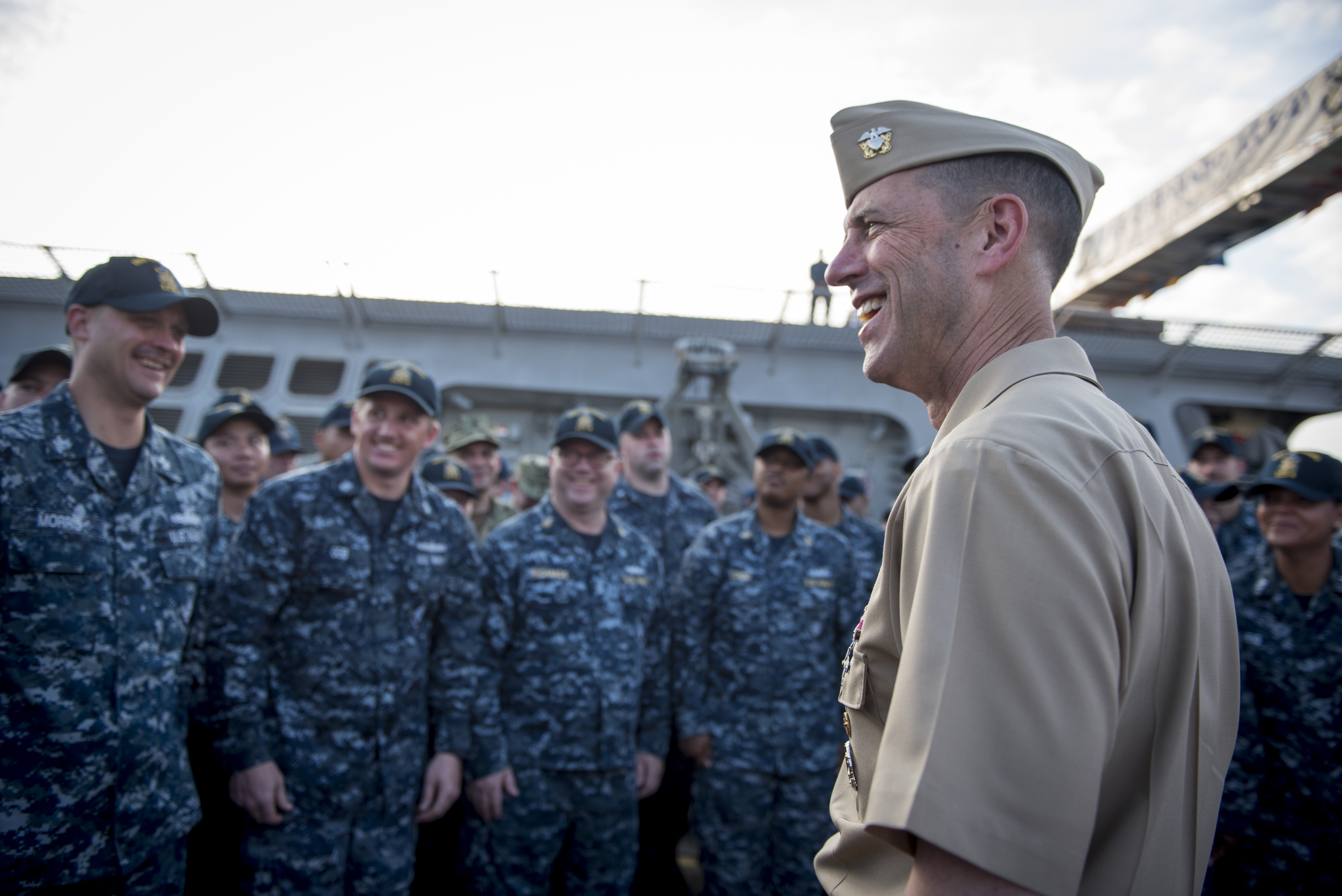
WASHINGTON, D.C. — Chief of Naval Operations Adm. John Richardson is working to increase both the size and the capability of the fleet, with part of his plans relying on the notion to “network everything to everything” and allow sensors and weapons payloads to become a service available to fleet commanders.
Richardson, speaking Friday morning at the 2017 Naval Future Force Science and Technology Expo hosted by the Office of Naval Research and the American Society of Naval Engineers, said he looks at not just the number of ships in the fleet but the overall output of naval combat power. While a traditional shipbuilding-only approach gets the Navy to the right level of naval power by the late 2030s, Richardson said the Navy and industry need to work together to reach that same level of combat power much faster.
“Under the most traditional shipbuilding profiles – if we kept building ships at the profile, the rate at which we do right now – you can see that we get to 350 somewhere in about late 2030s, which is way late to need. We need to get sort of this equivalent of naval power, but we need to get it in the 2020s. that’s the decade of competition for us,” Richardson said.
“How do we get this level of performance out of the Navy but get up there quicker so that we’re reaching that amount of naval capability, naval power in the 2020 vice the late 2030s?”
More shipbuilding is the first of three ways to boost naval combat power, he said. Noting the many studies that have been conducted to determine the right size for the Navy going forward, CNO said, “we can argue about whether it’s 350, 351, 355, but it’s all really a pretty tight cluster around that mid-300s. And so we’ll let that discussion ensue, but as the person who’s consumed with building … the next navy, I’m saying let’s get building. All of the estimates, all of the assessments say it’s bigger than we are right now by a significant amount, and we’ve taken a look and coordinated and engaged the industrial base, and they’re ready for this challenge. If it’s about platforms, we can probably build 30 more ships than are in the program right now in the next seven years. If it’s about aircraft, hundreds more aircraft. The industrial base is ready to handle this challenge, we just have to make sure we can resource it.”
The second way to increase the output of combat power is to add more capability per ship: more advanced sensors, longer-range munitions, advanced technologies like directed energy weapons. And the third piece of the plan is to increase the ability of the ships and planes to operate together as a fleet, with Richardson saying that he leans towards the end of the spectrum that calls for netting together “everything to everything.”
Once that netting takes place, Richardson outlined his vision for operational commanders – from the numbered fleet commander to an individual pilot in a cockpit – being able to tap into a collection of all the sensors operating in the theater and make use of all the weapons on ships in the area, with both the incoming data and the outgoing munitions being a “service” for operators to use as needed.
“The fleet commander will have all of the sensors in his [area of responsibility] or her AOR at his or her disposal. If you’re properly networked too, all of the platforms, the blue platforms, are at that fleet commander’s disposal as well, and on those platforms are payloads, and so now you’ve got a system where, hey, I’ve got connectivity to all those payloads, it’s a service approach to payloads,” Richardson explained.
“And the tricky part is in the middle; how do I take that tremendous amount of data from all my sensors, my service of sensors, and connect it in the most effective and efficient way to my payloads, which are going to be the thing that I use to influence that environment? And so now you start to see the challenge for all of the science and technology [community].”
Using the OODA Loop reference – the fighter pilot process of observing, orienting, deciding and acting – he said the observe portion would be covered by the network of sensors and the act portion would be covered by the network of payloads. What will win an engagement, he said, is whatever technological developments industry can come up with to make sense of the massive quantities of data and create an actionable plan for leveraging those payloads.





